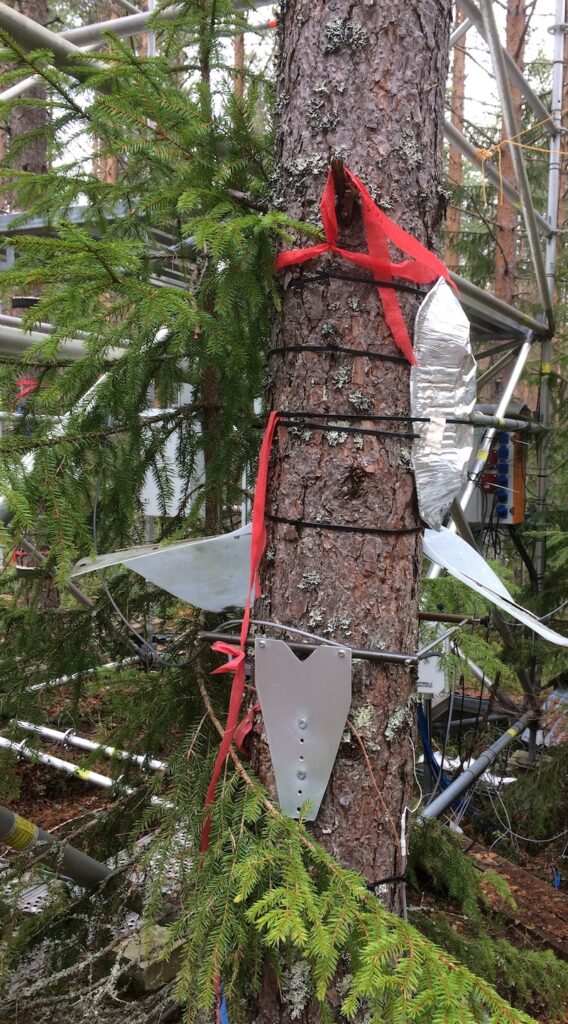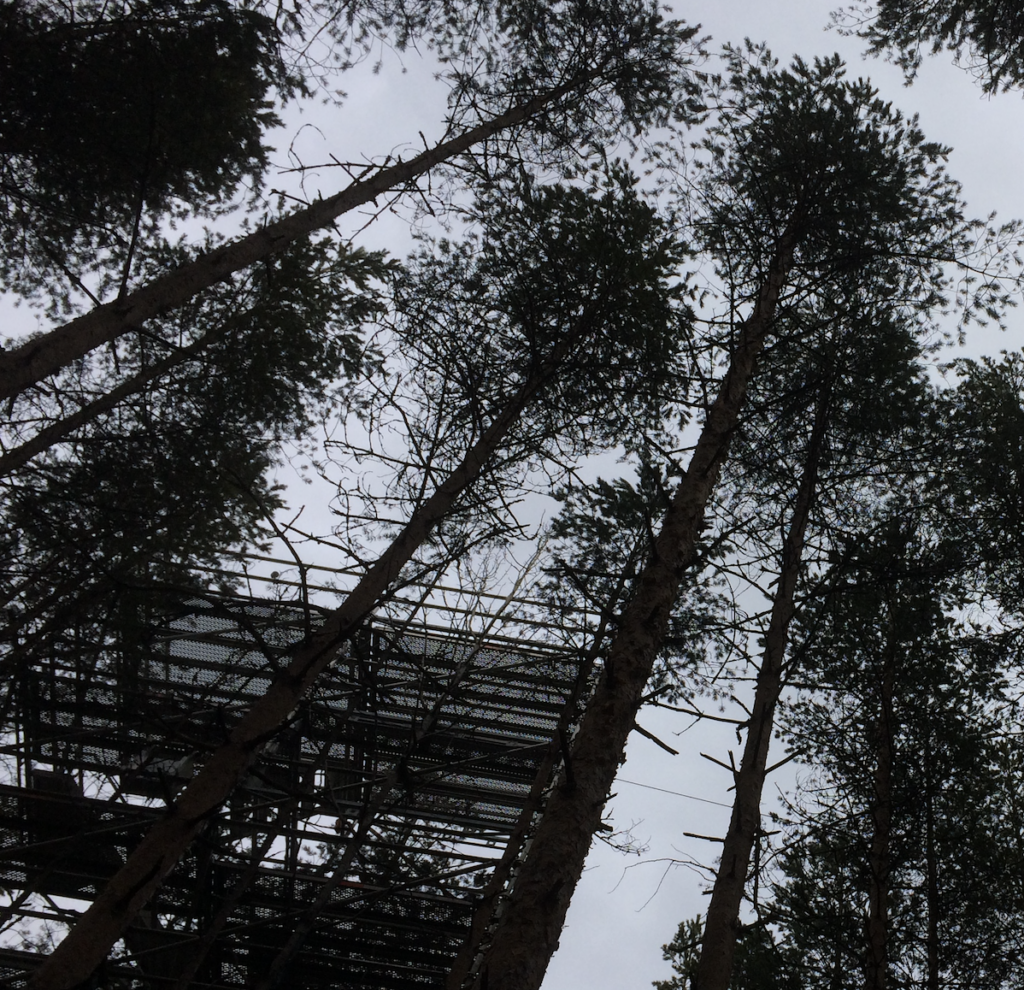
Meet the Scotch pine #34B (ID and exact location were changed to protect the tree’s anonymity). The pine is strapped with various sensors, through which it offers streams of data about its interaction with the local forest environment and the atmosphere. This is a story of how this pine/sensing device caught a disease known as instrument poisoning and started offering “bad data”.
The Scotch pine #34B is strapped with a rigid metallic band, a tight belt-like dendrometer that traces the width of its cortex; the millimeters it expands and shrinks as time passes by and the weather changes. I can also see at least 4 carefully drilled holes with probes going a bit deeper inside its body to learn more about the sap flows. Up in the canopy, a few of the pine’s branches and leaves are tied up inside a small translucent chamber that, every once in a while, closes and points a couple of subtle laser lights at the leaves to measure photosynthesis processes. A couple of more sensors that are located in adjacent towers trace the exchange of volatile organic compounds between the soil, the tree, and the atmosphere. This data-collection assemblage should help people figure out details of cloud production and various other atmospheric processes.


On the day of my visit, I also learned that the tree had been strapped with these sensors for approximately 2 years and currently is not doing ok. According to the scientist who was walking with us through the forest that day “it started to provide bad data” [T2]. When prompted to provide clarification, the scientist explained that the tree was suffering from a sort of instrument poisoning, a common way to refer to the point in time, when a tree needs to rest and the instrumentation setting needs to be moved to another part of the tree, or to a different tree, to again start obtaining “good data”.
The image of Scotch pine #34B all strapped with sensors and indeed looking a bit tired, haunts me ever since. My first thoughts were about how it is so that there is a need to poison a tree for some data? What was meant by good data? I have imagined many times that by throwing some bad data, the pine might be simply screaming “leave me alone” or even “fuck off”, perhaps something along those lines? If I mention this anecdote to other people this worry is a common association. On the other hand, there are some people who don’t seem to question whether doing this is even a bit problematic, after all it’s (only) a tree. Neither reaction feels right to me today. Both are dichotomous lectures of what is going on.
Andrea